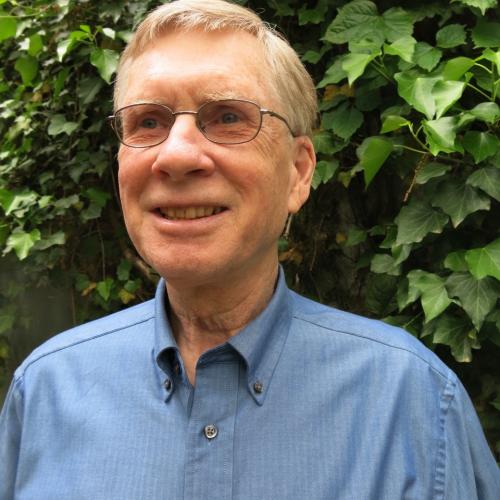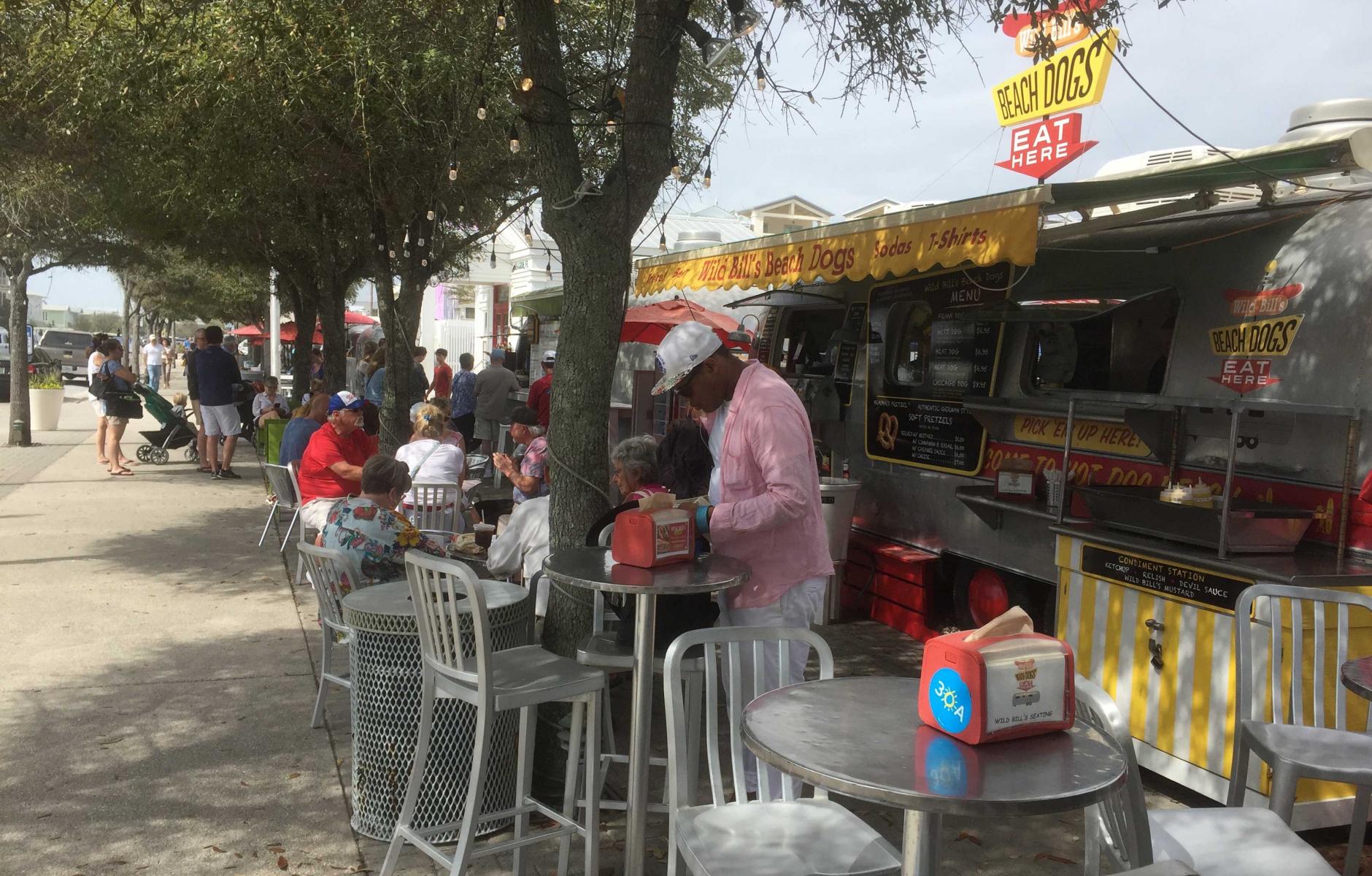
A good place revisited
Note: Seaside was influential as a walkable resort town built from scratch, starting in the 1980s. Similar developments were planned and built on the Florida Panhandle in the last three decades. This special report chronicles Seaside's changes from the perspective of early designers and a writer who introduced the town to a national audience with the article A Good Place to Live in The Atlantic Monthly magazine.
Last month I rode Amtrak’s “Crescent” from New York to Birmingham, Alabama, and then picked up a rental car and drove five hours south to Seaside—the Florida Panhandle community where New Urbanism’s ideas first came to fruition in the 1980s. It was my first return in 18 years to the walkable town so patiently developed by Robert Davis.
My initial introduction to Seaside came in 1987, when I went there to examine this new-yet-old style of development and write an Atlantic Monthly cover story about the reemergence of traditional town planning. Since then, I had been back twice—in 1989 for a conference on Hegemann and Peets’ classic urban design book, The American Vitruvius, and in 2000 for a forum on mixed-use, mixed-income development.
What spurred my return this mid-winter, after such a long absence, was an unusual announcement about the awarding of the Seaside Prize. In most years, the Seaside Institute—a civic organization founded by Davis—presents the Seaside Prize to one or two designers who have made an impact on that 80-acre development or on New Urbanism. This year, by contrast, the plan was to bestow prizes on five of Seaside’s most prolific living architects: Robert Orr, Ernesto Buch, Walter Chatham, Alex Gorlin, and Deborah Berke. As the event’s organizer, Washington, DC, architect Dhiru Thadani, explained to me, many individuals who did important work at Seaside are approaching, or passing, three score years and ten. The time had come to start presenting the awards in clusters.
I figured the Seaside Prize Weekend, a three-day affair attended by approximately 150 people, would be an opportunity to see this enormously influential town through the minds of five accomplished designers, who together had produced an impressive 15 percent of its buildings. Thus, late on a Thursday evening, I turned off of County Highway 30A and parked next to Central Square—the six-sided public space that anchors Seaside’s long-gestating town center.
Wrapping most of the perimeter of Central Square is a series of multi-story retail, restaurant, and mixed-use structures—very active, day and evening. Where the Square abuts the highway, a line of Airstream trailers is parked more or less permanently. The trailers—specimens of the streamline aesthetic that captivated American designers in the 1930s and 1940s—operate as food trucks, perhaps the most captivating food trucks in the entire US. At the windows of the curvaceous aluminum-clad vehicles, people line up to order burritos, barbecue, smoothies, and other food and beverages.
The Airstreams aren’t just objects to be admired. They are components of a carefully orchestrated gathering place. Shared outdoor seating abounds in front of the trailers. Shading the seating is a luxuriant canopy formed by well-maintained street trees. The result is a stunningly convivial environment—a major attraction on 30A, which runs along the Gulf Coast for 17 miles, connecting Seaside to Alys Beach, Rosemary Beach, and other New Urbanism-influenced communities.
These days, however, the biggest progress at Seaside is taking place in a less conspicuous location: behind the town center’s shops. That’s where the Lyceum, the community’s educational and cultural compound, is situated, somewhat hidden away. The Lyceum features a growing set of buildings, including the Seaside Neighborhood School (now being doubled in size), the Academic Village, the Assembly Hall, and seven cottages reserved for faculty and students. (The cottages are descendants of the Katrina Cottages that Marianne Cusato designed in 2005 for the Mississippi Renewal Forum.)
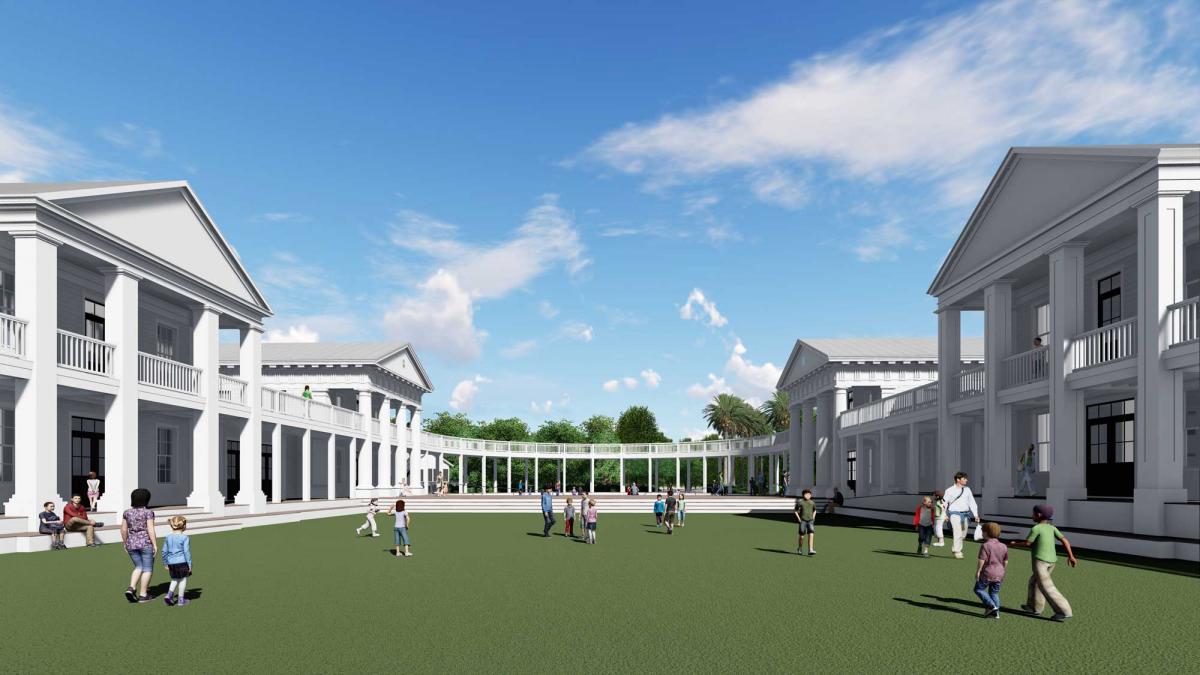
At the far end of the Lyceum, an amphitheater nears completion. It’s shaped so that up to 350 people can gather for dinner or a lecture on its stage; one evening during the Prize Weekend, New York architect Robert A.M. Stern delivered a well-received talk about the “recuperation” of the American city and Seaside’s role in it. As many as 1,500 people can sit on the amphitheater’s lawn for concerts. Cultural aspiration has long been important to Seaside. Serious discussions compete against the pleasures of the beach, just as they did in Chautauqua movement of the 19th century, which brought lectures and concerts to rural retreats like Chautauqua Institution in western New York.
Forgiveness of quarrels past
In American history, the years 1817-25 are known as the Era of Good Feelings because bitter partisan disputes seemed to briefly subside amid a desire for national unity. Listening to the prize-winners and other speakers in the Assembly Hall, I felt as if the Era of Good Feelings had belatedly come to Seaside. Some of the prize recipients, especially Walter Chapman, professed a surpassing mellowness about the disagreements that have long been a feature of Seaside’s culture.
Chatham, an architect who practiced in New York City and now chairs the planning board in Hudson, New York, has been an exponent of Modern architecture even while embracing traditional ideas about urban form. In the 1980s he designed a beach house that conformed to Seaside’s concise but strict building code, which called for vertically proportioned windows and other features often associated with traditional dwellings. “I experimented to see how different a building I could design within the given stipulations,” Chatham told The New York Times in 1989. “My house is meant to be a work of modern architecture.”
Some folks hated it, as Chatham freely acknowledged in his lecture. “People wrote letters viciously complaining about Walter’s house,” observed Thadani. But when a later owner altered and expanded Chatham’s boldly-scaled house, Thadani noted, “they complained about it being added onto and changed.” Such controversies seem to have left Chatham philosophical rather than embittered. “Sooner or later,” he said, “you all get used to everything. It doesn’t matter.”
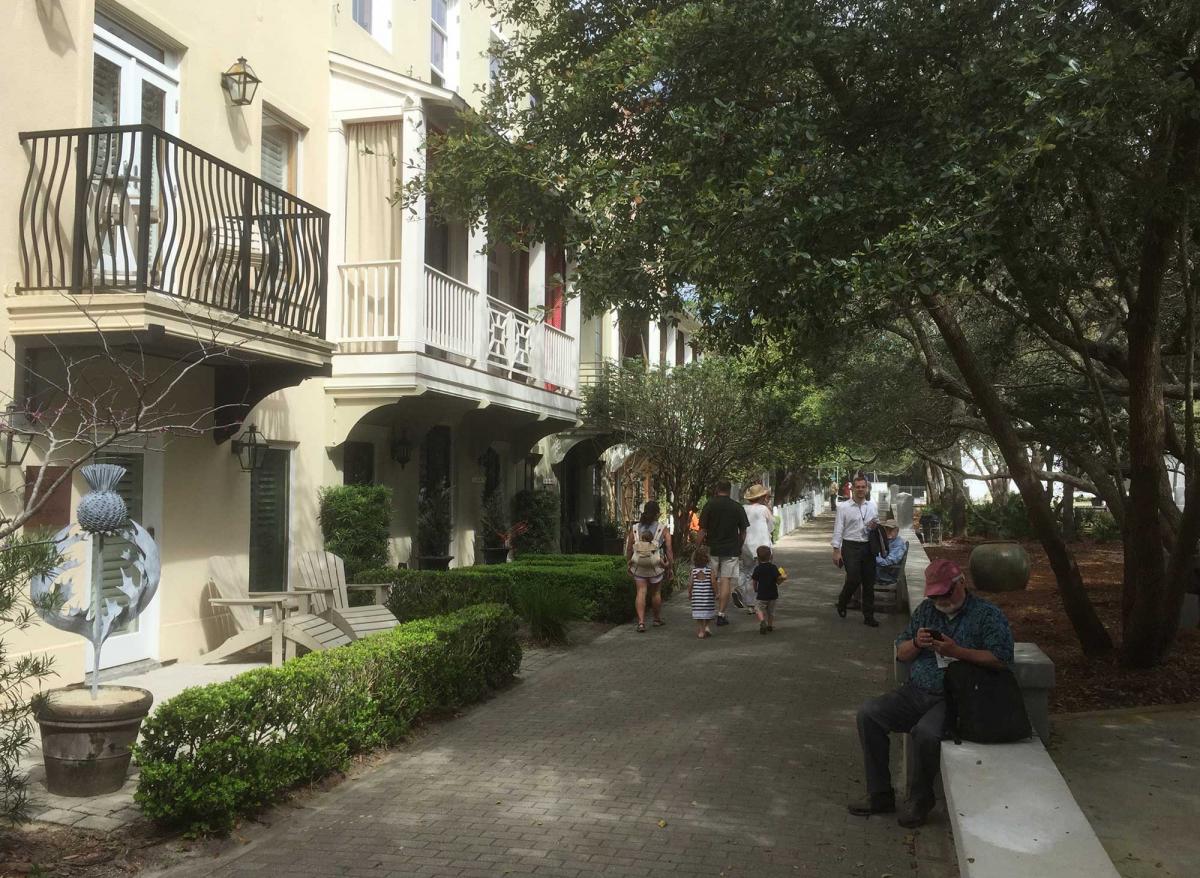
What does matter, Chatham thinks, is that Seaside—thanks largely to theorist Leon Krier—has a res publica, a well-defined public realm. In Ruskin Place, a precinct made up mainly of townhouses, Chatham emphasized that there is “public space attached to residences—a central open space” that all the inhabitants look out on. That feature, unfortunately, is missing from most development in the US, Chatham said. “We need to code the US so everyone, as a matter of right, has a res publica.”
Another modernist speaks
“I was inspired by Walter Chatham,” New York architect and prize winner Alex Gorlin told the assembly. “I wanted to do something very Modern.” For a townhouse for himself on Ruskin Place in 1994, Gorlin designed a building that became known as the “Stairway to Heaven.” Its most prominent corner was cut away, making a dramatically exposed outdoor staircase. Gorlin called it “a Modern interpretation of a brownstone.” In his mind, the staircase became a place where people could gather outdoors, as residents have long done on the steps of New York’s 19th-century townhouses.
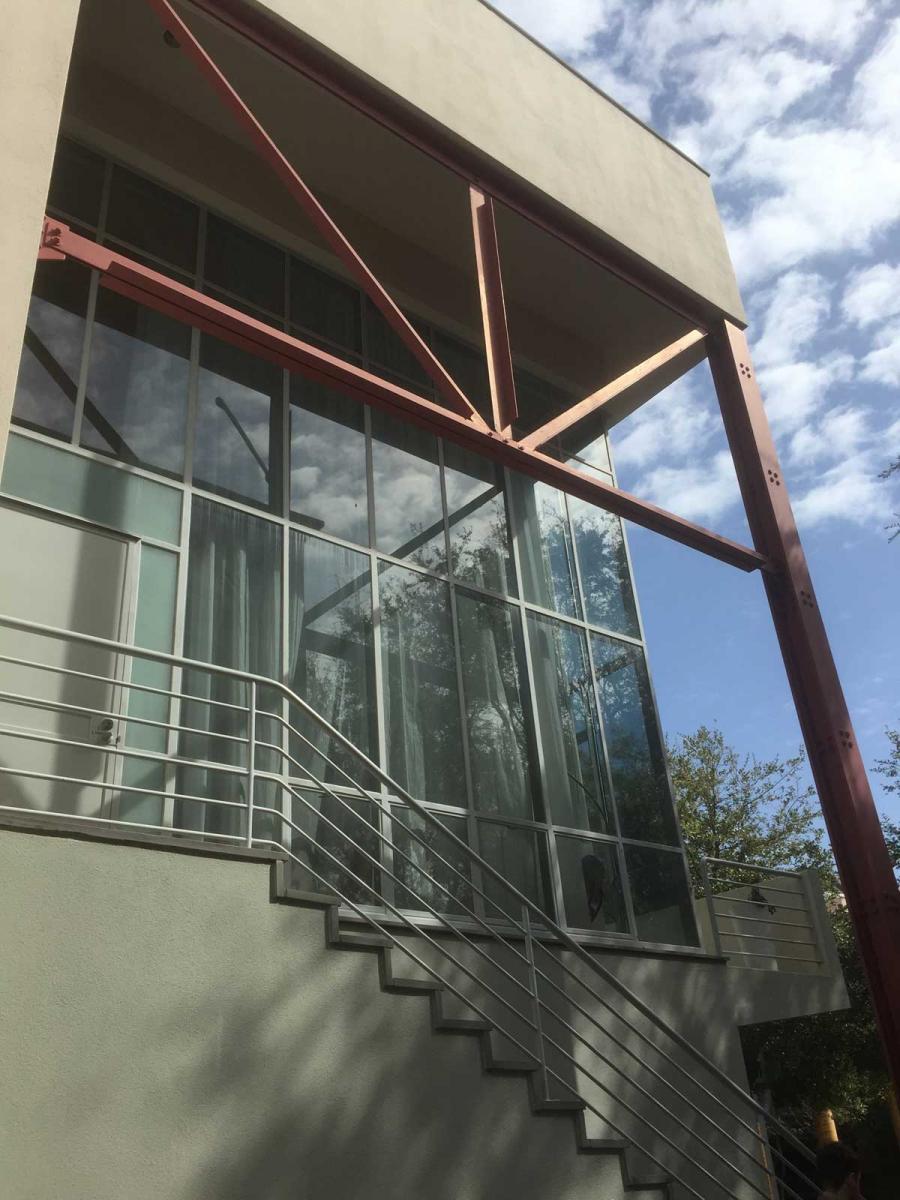
Gorlin designed several other townhouses on Ruskin Place that demonstrated his versatility. One of them is “The Shutter House,” because French doors and shutters dominate its appearance. As Gorlin put it, the idea was that “A detail would determine the whole facade.”
Together, Chatham and Gorlin’s work shows how hard it is to constrain a talented architect who has strong stylistic preferences. But is Chatham correct that “sooner or later, you all get used to everything”? I wondered about that when, during a walking tour, I heard a woman complain that Seaside was ruined when red-hued concrete pavers were used to pave the streets. Concrete pavers to her, were inauthentic. Seaside should have insisted on real bricks. But the concrete pavers had been put in place by 1987, when I saw Seaside for the first time. The lesson may be that in a community strongly focused on aesthetics, contentiousness about matters of style and building never truly vanishes. Seaside contains a lasting residue of conflicting opinions.
The journey to building Classical
I wanted to hear New York architect Deborah Berke, dean of Yale School of Architecture, because she designed many early houses at Seaside and she co-edited Architecture of the Everyday, a 1997 book that pleaded for “an architecture that is emphatically un-monumental, anti-heroic, and unconcerned with formal extravagance.” Unfortunately, Berke did not appear.
Ernesto Buch did, however, and he charmed people with his modesty. Born in Santiago de Cuba, a cousin of Andres Duany, who became his mentor—Buch was one of a group of young architects (“the night crew”) who worked into the wee hours drafting an early plan for Seaside. After the decision was made to erect a pavilion at the end of each street leading to the beach—thus marking the transition from the community to the Gulf and enhancing the pleasure of walking down the streets—Buch was commissioned to design the pavilion terminating Tupelo Street. He created a lacy, semi-transparent wood structure that reflected the Postmodern tendencies of the time, yet avoided the silliness and arbitrariness of much Postmodernism.

“Much to my surprise, it became a canonical symbol,” Buch recalled. The image circulated worldwide, putting Seaside on the map. “Without the Tupelo Pavilion, Seaside could not have traveled the world as it did,” said University of Miami architecture professor Roberto Behar. Buch remembered that Melanie Taylor, who helped design the Rosewalk section of Seaside, phoned him, exclaiming, “Ernesto, you’re the most famous unknown architect in the country.” Buch, as it transpired, was uninterested in celebrity. ”It was actually very flattering, not to be mentioned [by name],” Buch said during the Prize Weekend.
Buch’s talk was “The Journey to Building Classical,” and true to that title, he described his evolution into a Classical architect, working for the New York and Alexandria, Virginia, architect Allan Greenberg, and moving about 20 years ago to the Punta Cana region of the Dominican Republic at the behest of a client—the late fashion designer Oscar de la Renta, who was born in that country. In the Dominican Republic, Buch developed a close relationship with workers, helping them learn Classical techniques and create buildings of great beauty.
‘No place to buy potatoes’
It remained for New Haven architect Robert Orr to remind everyone of what a long shot Seaside seemed to be—before it became a huge success. Orr saw Davis to be “a man of sophistication and wealth,” and made a 12-hour drive across Florida to see the site. It struck him as “the Arabian Desert,” populated by “two red and yellow houses.” The location was incredibly remote. “You had to drive two hours to buy potatoes,” Orr said. The Duany and Plater-Zyberk plan “for 80 acres of desert” seemed “incomprehensible,” in Orr’s initial assessment.
Nonetheless, Orr and his partner, Melanie Taylor, proposed building a cluster called Rosewalk: 14 little houses squeezed onto six lots. The houses would be inexpensive yet charming, with light and views to offset their small square footage. The chief strategy, Orr said, was to create “assemblies of houses so that people would not notice their cheap construction; they would notice the place.” Inspiration came from motor courts, which had achieved much of their appeal by giving travelers small compounds outfitted with amenities.
“Our amenities,” he explained, “were things to bring people together,” such as a chess table, a pergola, a chair for two, and a sunken bathtub. (The bathtub later had to be removed because of sexual high jinks.) “There were no trees,” Orr said of the site, but houses were arranged to avoid destroying existing bushes. Native plants were relied upon, Duany said, because “they didn’t need irrigation.” Orr cringed at some of the construction, but Rosewalk proved popular. It gave Seaside a romantic aura. The lesson, according to Orr: “The precinct is the important thing.”
Tearing down and building up
As Orr and Duany walked the Prize Weekend attendees through Rosewalk, the group noticed a house that had been recently built on a tiny plot of ground behind an existing Tupelo Street dwelling. Ty Nunn, Seaside town architect, said the owner was given permission to erect the new house because the Tupelo Street house—built in the 1980s—was not as large as the code allowed. It was decided that it would be wiser to let someone squeeze a second house onto the land than to forbid it, and thus give the owner an incentive to demolish the original house and put a much larger one in its place.
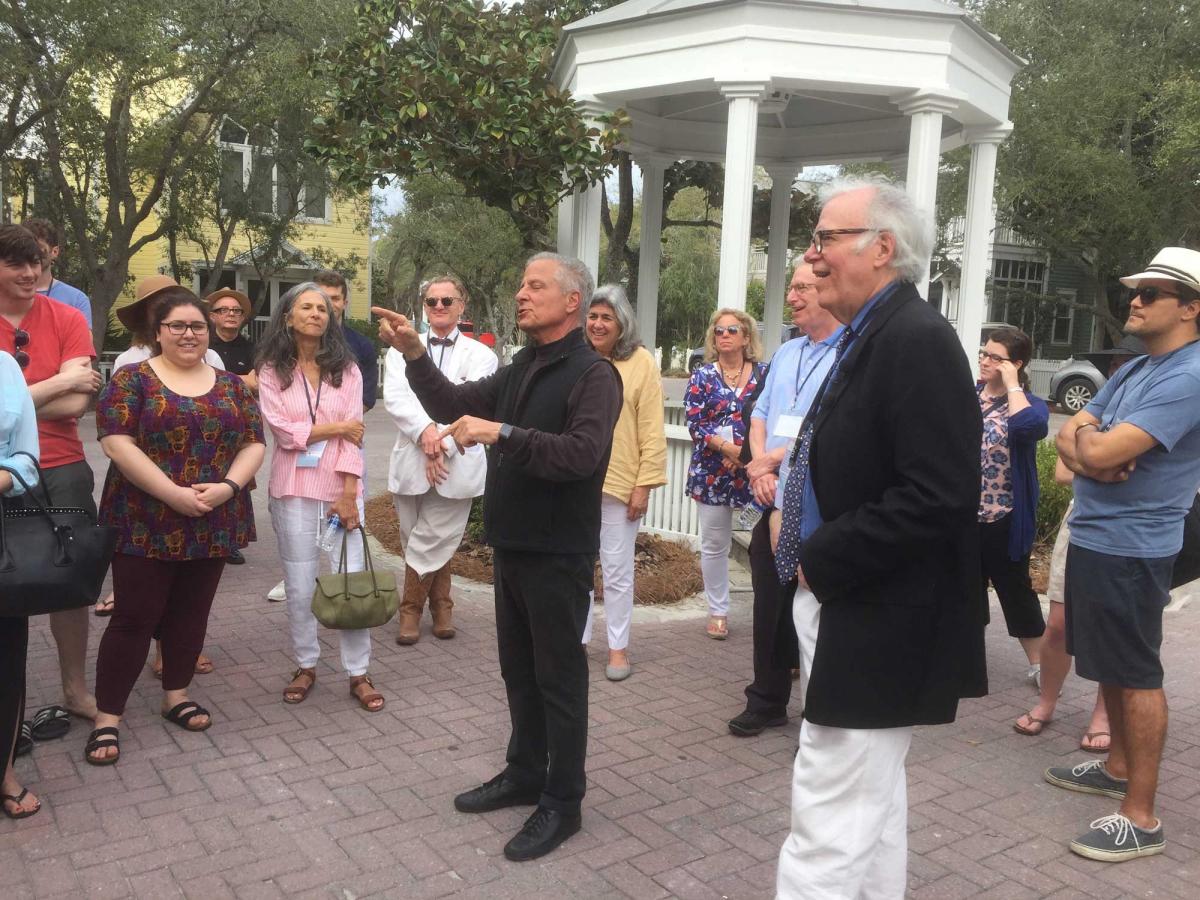
That example sparked a sustained discussion about one of the emerging realities of Seaside: People are starting to tear down houses and erect bigger ones. One of Berke’s houses has already been replaced. Teardowns and increases in building density also have come to Rosemary Beach, the New Urbanist community a few miles east of Seaside, and to other areas along 30A. Orr portrayed these changes as undesirable. “The assumption behind teardowns is that people will build back better,” he said, but it’s more likely that those putting up larger houses will be “people with no taste.”
Chatham, when leading a tour of Ruskin Place, identified one of the benefits of not covering the bulk of each lot with buildings: “You can have a garden.” Will Seaside in fact be degraded if it gardens and landscapes are sacrificed to greater building density? Said Duany: “I would say that Seaside, like a proper town, should evolve”—it should allow teardowns, and redevelopment at greater densities.
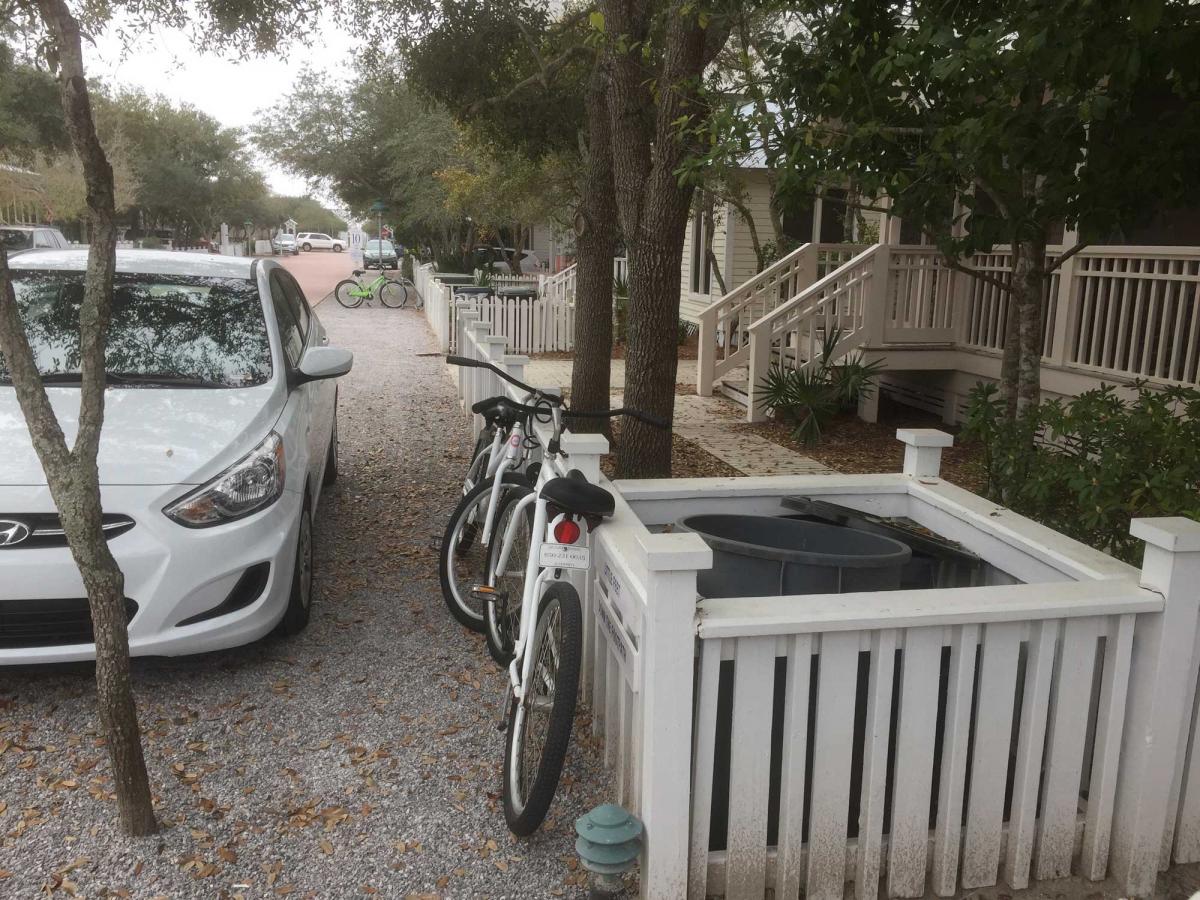
In part to get a better sense of this issue, I drove to Rosemary Beach with Rick Helfand, a retired McDonald’s executive who founded the Seaside School Foundation, a fund-raiser for the Neighborhood School. Helfand and his wife have owned two houses in Rosemary Beach, but are now transitioning out of ownership there because of rising density and the annoyances that it brings. As dwellings get bigger and are rented to larger numbers of occupants, conflicts erupt over parking, noise, and other issues. Helfand became weary, for instance, at finding other people’s cars or bikes repeatedly parked in front of his garage.
“In the last five years, it’s become very crowded,” Helfand said of Rosemary Beach, which exudes a European architectural flavor and looks, to my eye, well-maintained. “More and more people want to come here,” Helfand said. “It’s frustrating how successful it’s become. It’s pushing the full-time homeowners out of here. Nobody wants to be here full-time.”
When an existing house is razed and a new one goes up, the new dwelling often covers 85 percent of the lot, he said. “One of the biggest reasons for teardowns is to build a bigger house for rental,” Helfand explained. “In Seaside, a 2-bedroom house or condo gets $60,000 to $70,000 a year in gross rentals. If you replace it with a 4-bedroom house, you get $140,000.” Sales prices for houses in Seaside, Rosemary Beach, and Alys Beach—excluding beachfront properties—average $600 to $900 a square foot, he said.
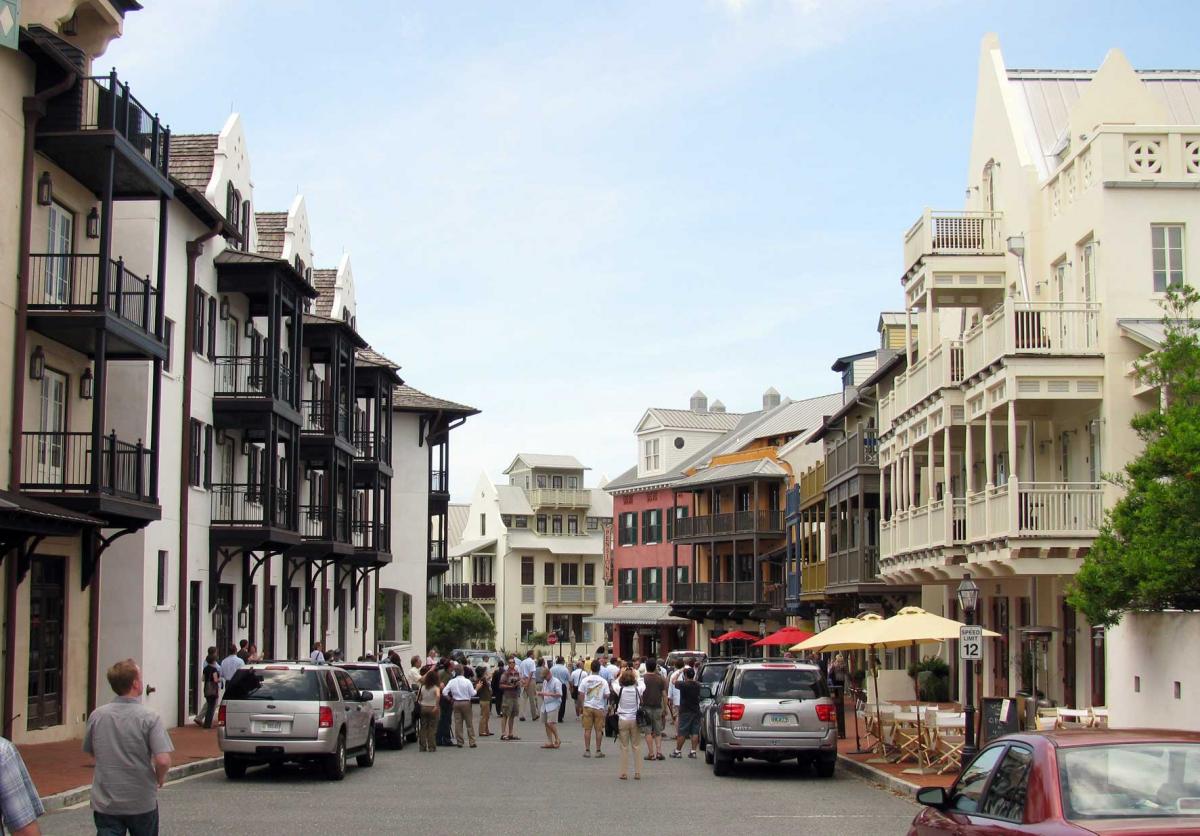
The transportation challenge
It could be argued that increases in density are an inevitable consequence of urbanization, population growth, and prosperity. For people who preferred the earlier, less crowded atmosphere, though, the results are troubling. The difficulties show up as congestion on 30A, the most direct route for travel among the coast’s New Urbanist communities. On the last week of February, while sitting with Helfand on a pleasant restaurant patio in Rosemary Beach, he pointed out: “It’s 15 minutes to Seaside now; in the summer it can be an hour.” Because of the congestion, he expects that over time, fewer homeowners will want to stay in these towns during the busier parts of the year.
Seaside, which has felt parking pressure for years, has its commuting employees park at Grayton Beach (about two miles to the west) and ride shuttles to their workplaces. A paved biking and walking path alongside 30A is another partial alternative to driving, though not one that most people are eager to use in the rain or in summer heat.
Thadani thinks congestion can be dealt with. “There has been a study and grant through the Seaside Institute for a mobility project,” he noted. One possibility, he said, is installation of a fixed transit system with its own right-of-way—a single set of tracks down the center of 30A. “For a couple of years, it’s been under study,” Thadani said. There’s also a study of a larger transit system that could bring in workers, many of whom live across the bay to the north. Perhaps autonomous vehicles could also smooth the Panhandle’s future.
Seaside and its neighboring communities have come an enormous distance since 1980, and they will continue to evolve. The 17 miles of Highway 30A are on the way to becoming an urban region—which means that pressures will intensify and some issues will have to be handled differently. With intelligence and effective planning, it’s possible that Seaside and it neighbors will achieve a workable balance. The problems they now face are hardly the end of the world.




